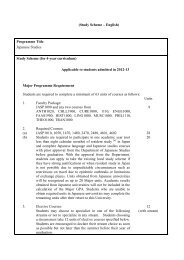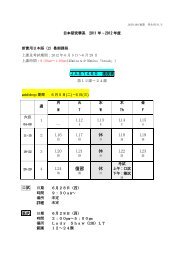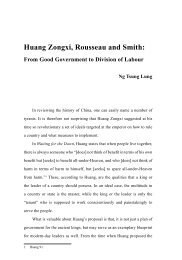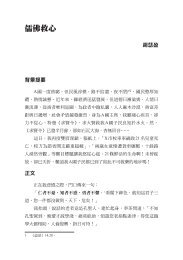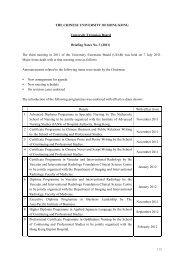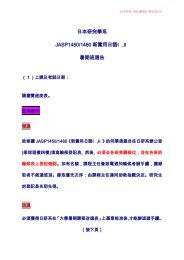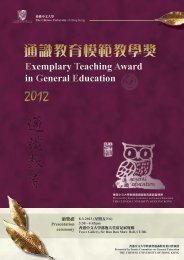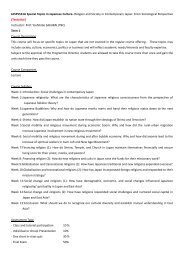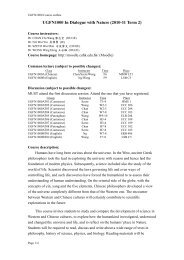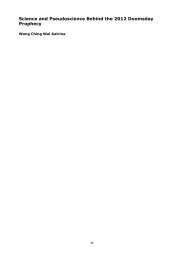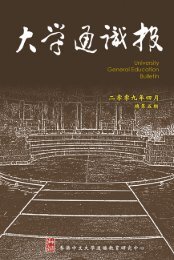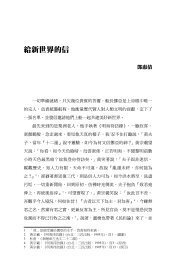ä¸è¼å ¨æ¸ - The Chinese University of Hong Kong
ä¸è¼å ¨æ¸ - The Chinese University of Hong Kong
ä¸è¼å ¨æ¸ - The Chinese University of Hong Kong
Create successful ePaper yourself
Turn your PDF publications into a flip-book with our unique Google optimized e-Paper software.
30 Special Topic: Assessment in <strong>University</strong> General Education Program<br />
the staff and children, and scheduled their subsequent visits. During their two<br />
subsequent individual visits, the students spent several hours at the on-site<br />
school and in the residences where the children lived. <strong>The</strong>y had the chance<br />
to observe, interact with, and assist the resident children with their school<br />
work, recreational activities, and general socialization skills. Throughout the<br />
time when these visits were occurring, the students kept a journal <strong>of</strong> their<br />
experiences, and had ongoing opportunities in the university classroom<br />
to share these experiences with one another and to discuss their questions<br />
or concerns. Thus, the TLAs designed to align with the intended affective<br />
learning outcome included lectures, classroom discussions, visits to the<br />
treatment facility, and writing activities.<br />
Assessment <strong>of</strong> Affective Learning<br />
I decided to assess the affective ILO using reflective journal writing.<br />
I believed that keeping a journal and the reflection that accompanies the<br />
process would be an effective method <strong>of</strong> teaching and learning aligned to<br />
the achievement <strong>of</strong> my ILO. Further, the outcome <strong>of</strong> this same activity, the<br />
submitted journal, could serve as a method for assessing the achievement <strong>of</strong><br />
the affective ILO. That is, the process <strong>of</strong> writing the journals would assist<br />
my students in deepening their understanding and feelings about this topic,<br />
and the journals themselves could be used as evidence <strong>of</strong> the development <strong>of</strong><br />
that concern. <strong>The</strong> students were guided with weekly prompts, beginning with<br />
requests to explore their expectations prior to their first visit to the residential<br />
treatment facility, and culminating with a final prompt in which they were<br />
asked to describe their “personal reactions to learning more about the plight<br />
<strong>of</strong> children suffering from significant abuse or neglect.” Student journals



